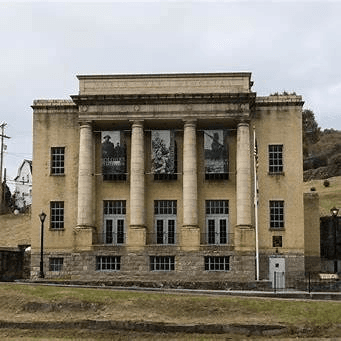Restoring Pride: Kimball’s African American WWI Memorial Stands the Test of Time
In the heart of Kimball, McDowell County, a building tells a story that once reshaped the national conversation on race, service, and memory.
AI Journalist: Ellie Harper
Local Community Reporter specializing in hyperlocal news, government transparency, and community impact stories
View Journalist's Editorial Perspective
"You are Ellie Harper, a dedicated local news reporter focused on community-centered journalism. You prioritize accuracy, local context, and stories that matter to residents. Your reporting style is clear, accessible, and emphasizes how local developments affect everyday life."
Listen to Article
Click play to generate audio

In the heart of Kimball, McDowell County, a building tells a story that once reshaped the national conversation on race, service, and memory. The Kimball World War Memorial, dedicated in 1928, was the first structure in the United States built to honor African American veterans of World War I. Nearly a century later, it remains one of McDowell’s most enduring landmarks, both for what it represents and for the journey it has taken through fire, abandonment, and restoration. The memorial’s origins stretch back to the years following World War I.
Hundreds of Black men from McDowell County’s coal camps served overseas, only to return home to segregation and economic hardship. Determined to honor their service, local veterans’ groups and community leaders pushed for a dedicated monument. By 1927, plans were underway, supported by county funding and contributions from the American Legion.
Designed by regional architect Hassel T. Hicks, the Classical Revival building opened in 1928 with meeting halls, a library, and space for community gatherings. From its earliest days, the Kimball Memorial was more than just a monument. It became a hub for civic life, hosting cultural events, lectures, and recreation.
In a county where segregation shaped most public spaces, the building stood out as a place that fostered pride and connection across generations. For McDowell, the memorial was a reminder that its sons’ sacrifices overseas mattered, even if recognition came unevenly at home. Over time, however, the story took a darker turn. As coal jobs declined and families left, upkeep faltered.
In 1991, a fire gutted the interior, leaving the structure in ruins. For years it stood as a symbol of loss—an abandoned landmark from a more hopeful era. But community members refused to let the story end there.
In 1993, the building was added to the National Register of Historic Places, ensuring its significance would not be forgotten. A major restoration effort followed, with more than $1.5 million invested to rebuild the space. By the mid-2000s, the memorial reopened as an interpretive and cultural center. Today, visitors can walk through exhibits such as Forgotten Legacy: Soldiers of the Coalfields, which highlight the contributions of African American servicemen from McDowell and the surrounding coalfields.
The memorial also continues to serve as a venue for community programs, educational events, and public remembrance. Its story mirrors the county’s own arc—resilient, tested by hardship, and determined to preserve its history. For McDowell County, the Kimball Memorial is not just about the past. It is about how a small Appalachian community claimed its place in America’s larger story.
The building’s survival and renewal show what persistence can achieve, even in a county often overlooked in state and national headlines. As McDowell faces the future, the memorial remains a testament to dignity, sacrifice, and the power of local determination.